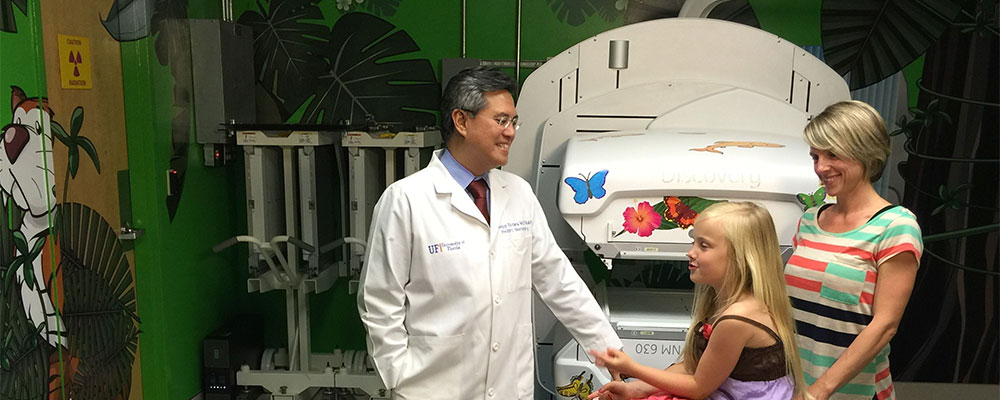
The Center for Cancer and Blood Disorders is here to help you and your child. Patients can access state-of the-art technology, infusion therapy and clinical trials, as well personalized care and nutrition counseling. These centers also offer financial counseling to patients.
The Center for Cancer and Blood Disorders has the latest in clinical research, chemotherapy and infusion therapy. Access to more than 300 clinical trial opportunities is available to patients. The center has a full-service pharmacy and a laboratory to offer convenient access to treatment. The center offers support group sessions for patients and their loved ones. Patients can also participate in pre-teen and teenage camps that offer educational opportunities.
U.S. News & World Report has ranked the Center for Cancer and Blood Disorders of the Pediatric Specialists of Virginia among the best cancer centers in America. The center's team, which includes medical oncologists and physicians board-certified in pediatrics, offers compassionate care to children and their families. The center also offers integrated treatment plans, making them a true Northern Virginia medical home.

In addition to a group of physicians, the center's treatment centres include nurses, child-life specialists, and social workers. Each team works together to create a unique treatment plan for each patient. Immunotherapy trials can also be offered by the center. These trials aim to eradicate childhood cancer. These trials use immunotherapy to boost the immune system. The scientists and physicians at the center are committed to developing better treatments for children suffering from blood disorders.
The center has a Blood Donor Center. They collect blood donations at hospital and give them to children who have the need. The center also collects platelets in order to participate in community blood drives. The Center for Cancer and Blood Disorders has an in-house specialty pharmacy that is open 24/7. Patients may also be offered financial counseling and nutritional counseling.
The Center for Cancer and Blood Disorders at Children's National Hospital is focused on developing new therapies for blood disorders and immune-related diseases. More than 300 clinical trials allow patients to access the most current treatment options. Parents can always talk to a member of the center’s team. A social worker is available to assist with psychosocial issues, and the center's child life specialists and nurses will provide care for the child during and after treatment.
The Center for Cancer and Blood Disorders offers convenient access and care in the Bethesda area. Patients can receive state-of-the-art infusion therapy, access to clinical trials and immunotherapy trials, and receive nutritional counseling and financial counseling. The center is also one the largest in the country for pediatric cancer. The doctors are over 40 years old and trained at the MD Anderson Cancer Center, Houston.

The Center for Cancer and Blood Disorders is now collaborating with CureWorks. CureWorks is a program that develops better immunotherapy treatments for childhood leukemia. The partnership involves institutions from Europe, Canada, and the U.S. The Center for Cancer and Blood Disorders plays a leading role in the development and implementation of new treatments for childhood cancer and other blood disorders.
FAQ
Who is responsible?
Public health is an issue that affects all levels of government. Local governments manage roads, schools and parks as well as recreation facilities. Laws and regulations regarding food safety and workplace safety are provided by the federal and state governments.
What are the main purposes of a health care system
The health system must provide quality medical services at affordable prices to all people.
This includes providing preventive care, encouraging healthy lifestyles and the appropriate treatment. It also means equitable distribution of resources in the health care system.
What is an infectious disease?
An infectious disease is caused either by bacteria, viruses, parasites or both. Infectious illnesses spread quickly via close contact. You can get measles or mumps, rubella (German whooping cough), pertussis/whooping chives, rubella ("German measles"), measles), pertussis ("whooping cough"), rubella ("German measles"), chickenpox), strep thyme), hepatitis A/B, HIV/AIDS), herpes simplex viruses, syphilis, gonorrhea and chlamydia
How can I be a creative healthcare professional?
There are many pathways to becoming a creative health professional. Some people start as students and others work in different fields like engineering or business.
Some individuals choose to learn a course about a specific topic. Others choose to enroll in an elective course that explores diverse perspectives on health care and health.
No matter your chosen path, you'll be able to learn about health topics and health care through readings, discussions in groups, assignments and projects, as well as lectures and readings. There are workshops, conferences, as well as seminars.
Once you have completed the program, your knowledge will allow you to work with patients, clients, colleagues and clients in any position within the health system.
A doctorate could be your next step.
What happens if Medicare is not available?
Uninsured Americans will increase. Employers will be forced to terminate their employees' plans. Senior citizens will have to pay higher out of pocket for prescription drugs and medical services.
Statistics
- Consuming over 10 percent of [3] (en.wikipedia.org)
- The health share of the Gross domestic product (GDP) is expected to continue its upward trend, reaching 19.9 percent of GDP by 2025. (en.wikipedia.org)
- Over the first twenty-five years of this transformation, government contributions to healthcare expenditures have dropped from 36% to 15%, with the burden of managing this decrease falling largely on patients. (en.wikipedia.org)
- For the most part, that's true—over 80 percent of patients are over the age of 65. (rasmussen.edu)
- The healthcare sector is one of the largest and most complex in the U.S. economy, accounting for 18% of gross domestic product (GDP) in 2020.1 (investopedia.com)
External Links
How To
What is the Healthcare Industry Value Chain (or Value Chain)?
The entire healthcare industry value-chain includes all activities related to providing healthcare services to patients. This includes the business processes within hospitals and clinics and the supply chains that connect them to other providers such as physicians, nurses, pharmacists, insurance companies, manufacturers, wholesalers, and distributors. The end result is a continuum of care that begins with diagnosis and ends with discharge.
The value chain is made up of four major components:
-
Business Processes – These are the tasks that individuals perform throughout the delivery of health care. A doctor might conduct an exam, prescribe medication and send a prescription to a pharmacy. Every step must be done efficiently and accurately.
-
Supply Chains – The entire network of organizations responsible for ensuring that the right supplies reach those who need them. A typical hospital has dozens of suppliers, including pharmacies, lab testing facilities, imaging centers, and even janitorial staff.
-
Networked Organizations: To coordinate these entities, it is necessary to have some means of communication between them. Hospitals have many departments. Each has its own number of phones and offices. To ensure that everyone is up to date, every department will have a central point from which employees can access updates.
-
Information Technology Systems – IT is crucial in order to ensure that business processes run smoothly. It is essential to ensure that business processes run smoothly. Without IT, everything would be a mess. IT also provides a platform for integrating new technologies into the system. Doctors, for example, can connect to a secure internet connection to access electronic medical records.